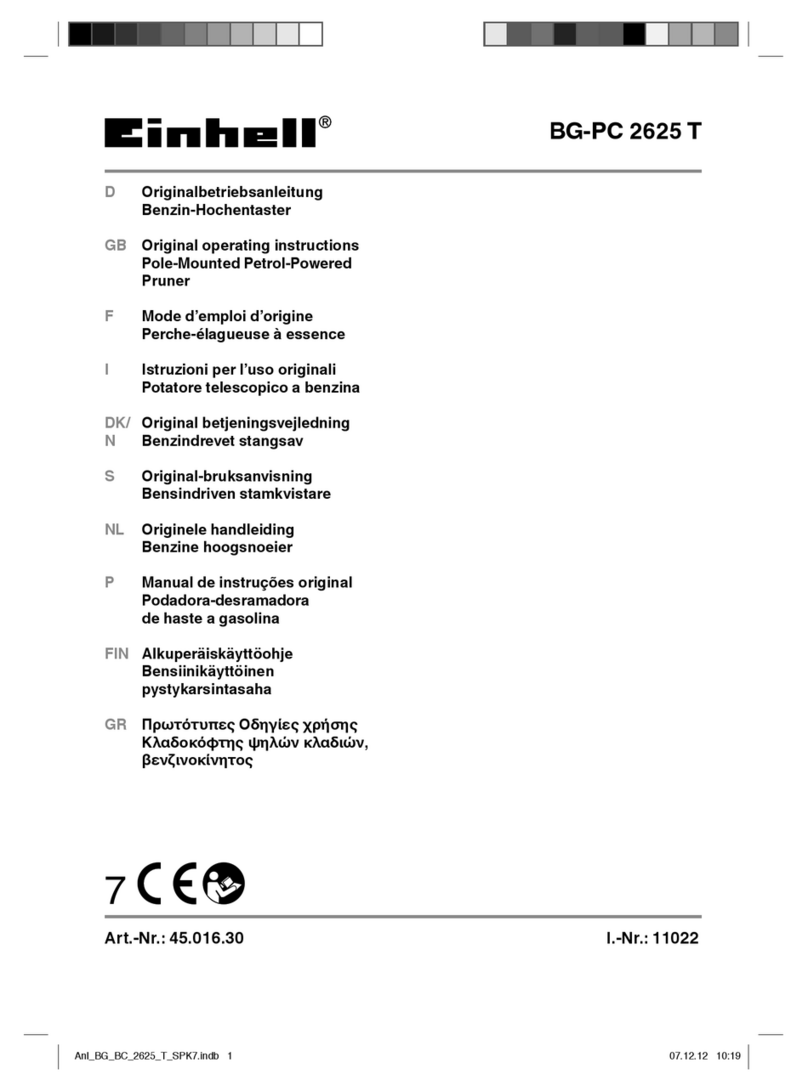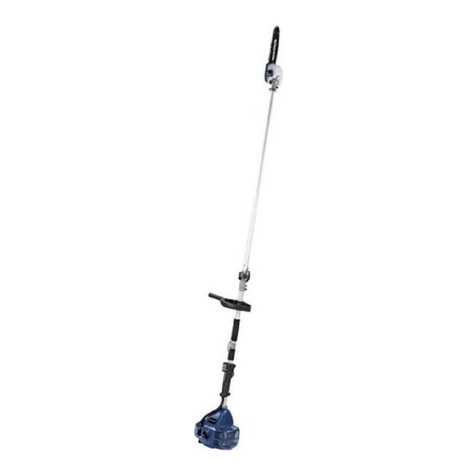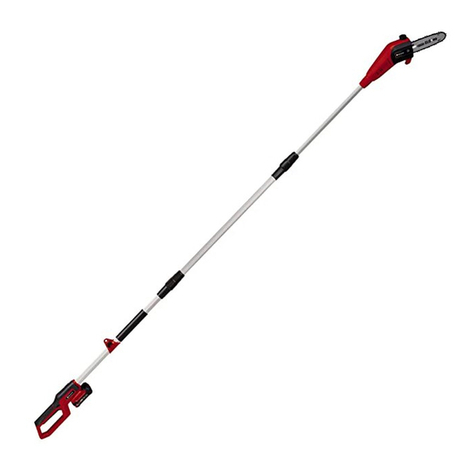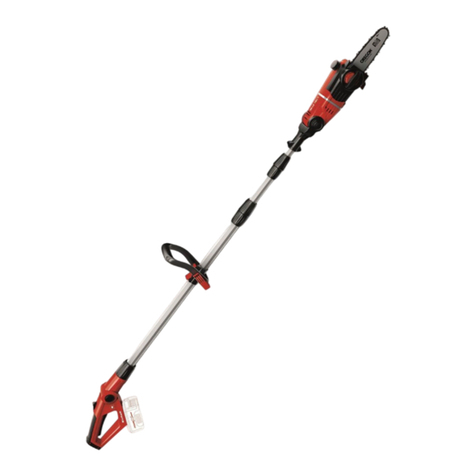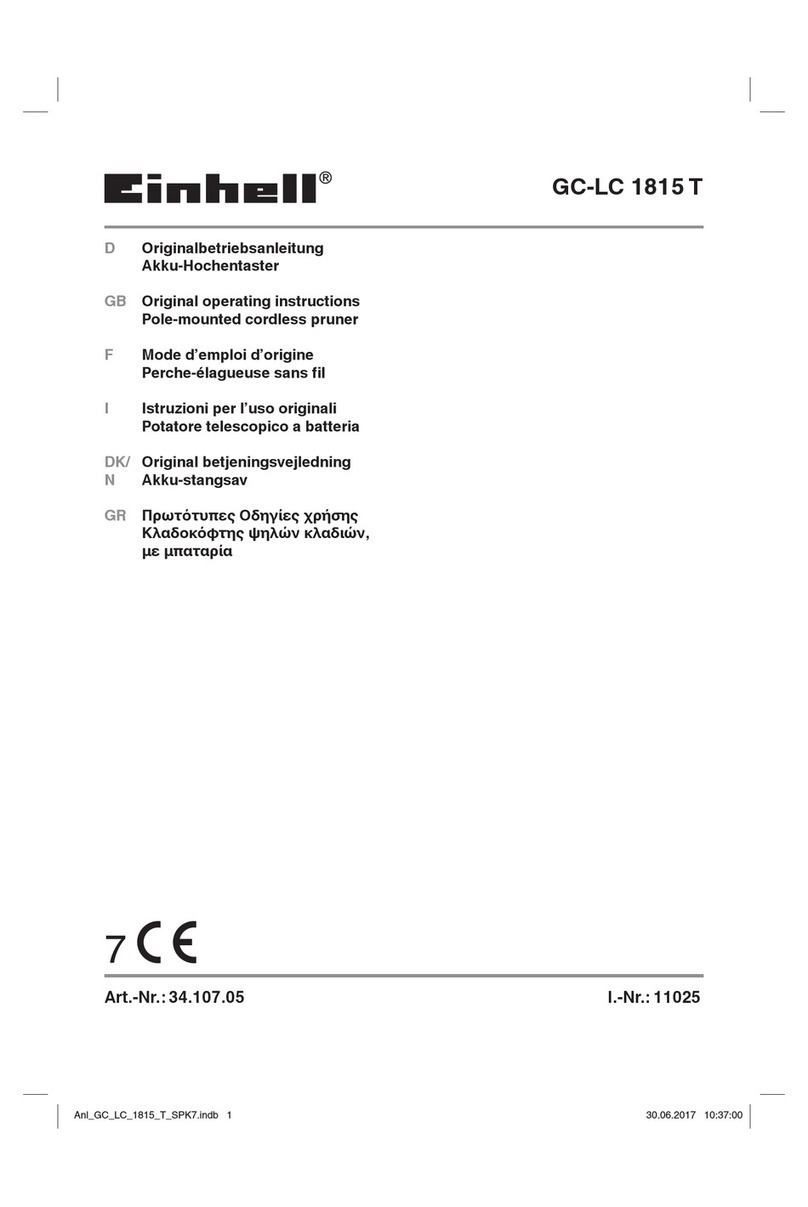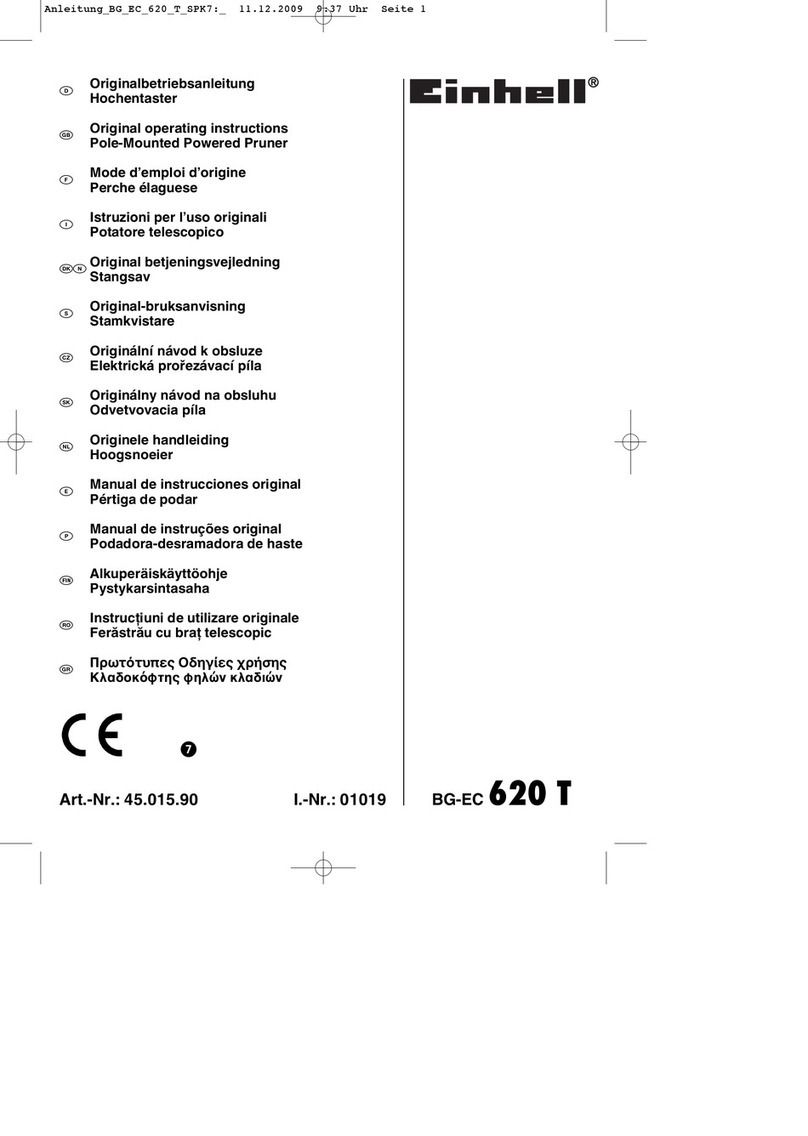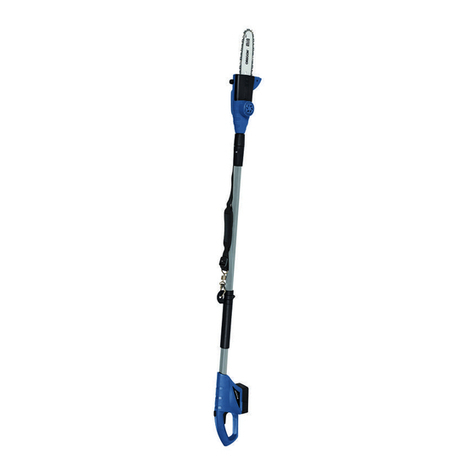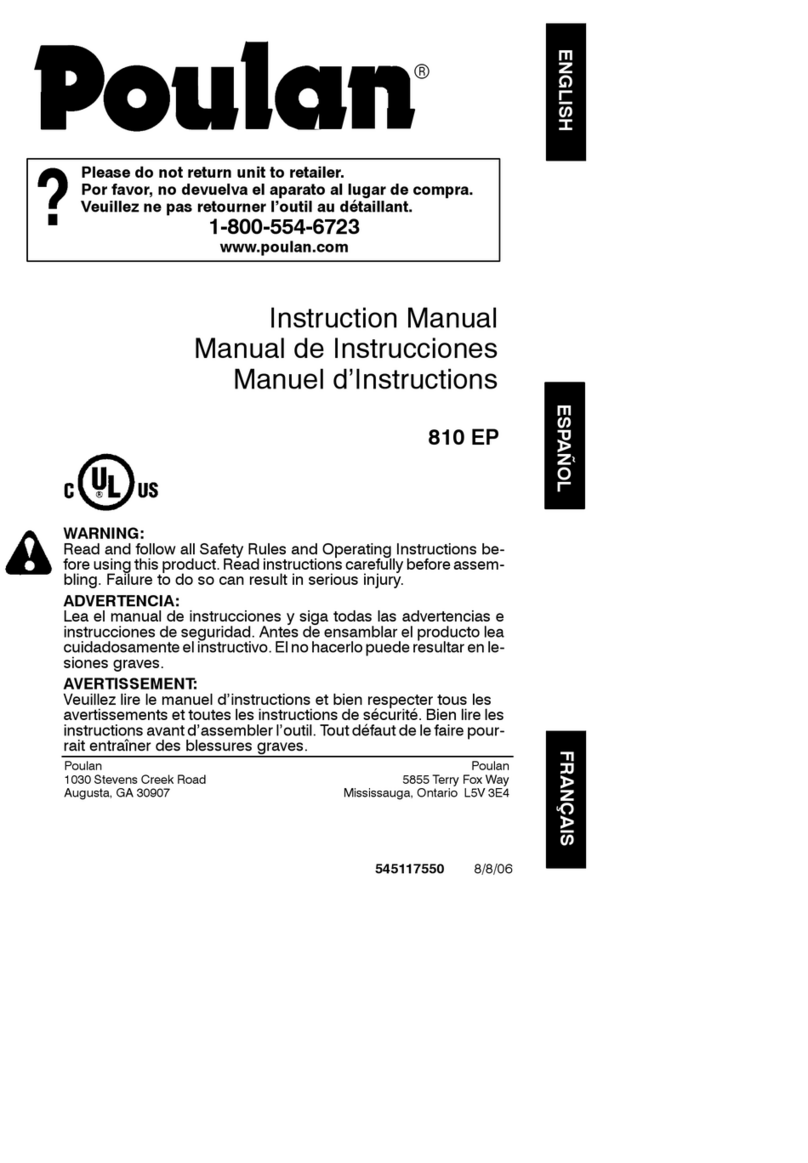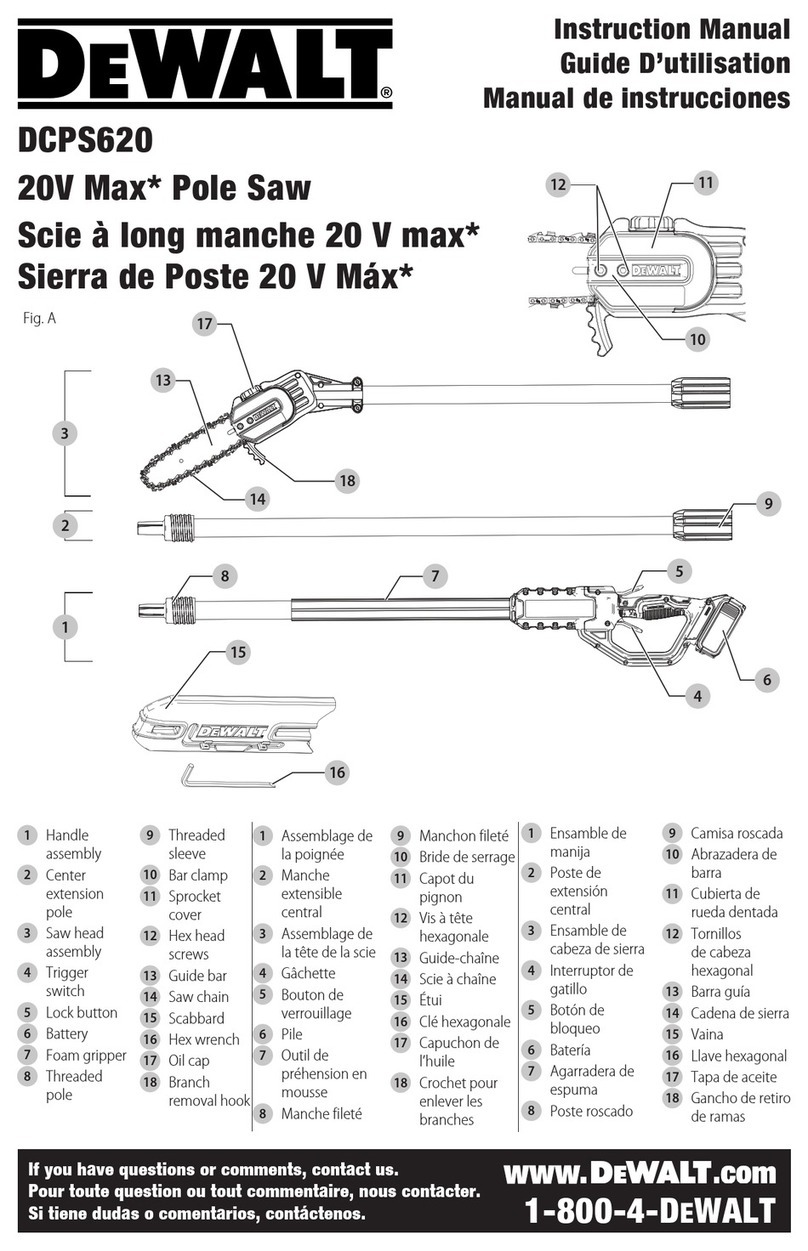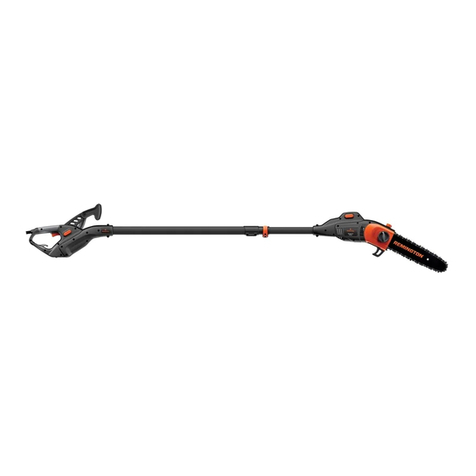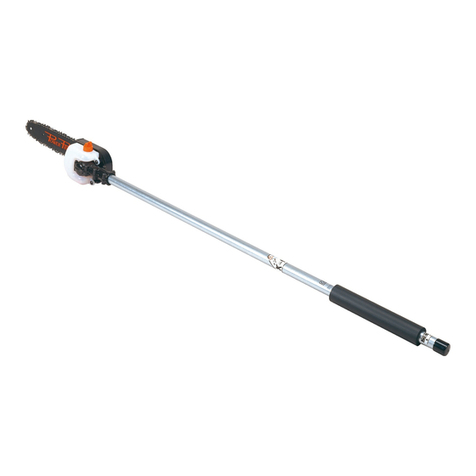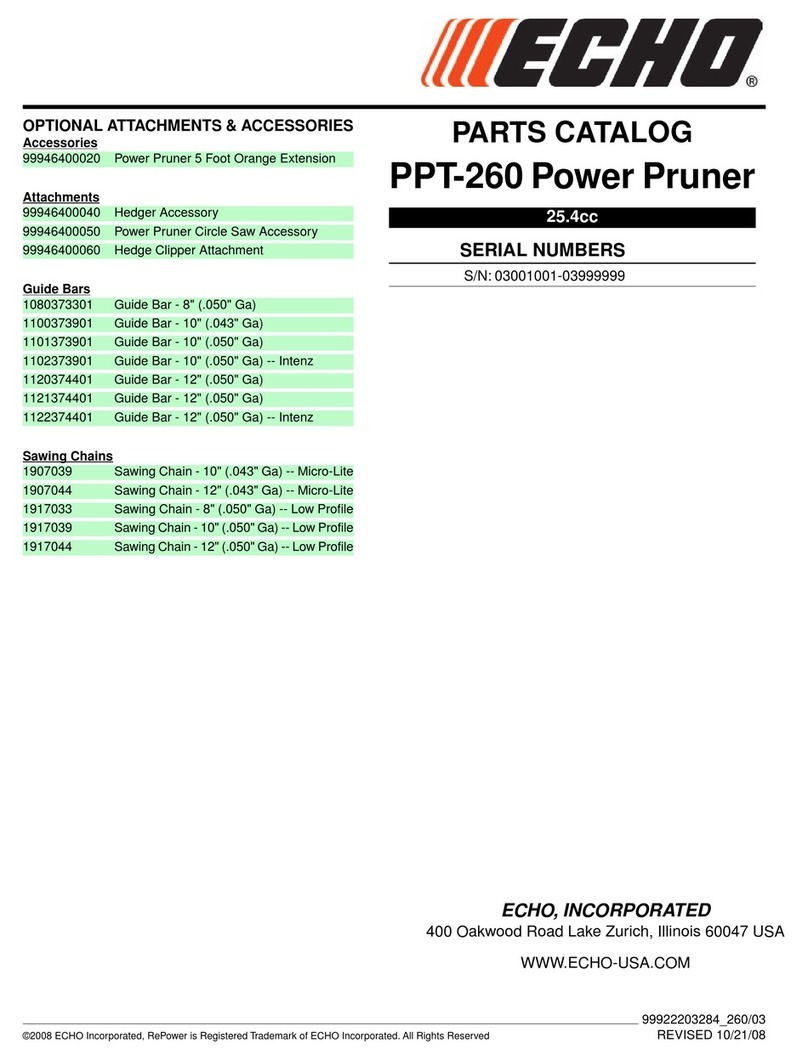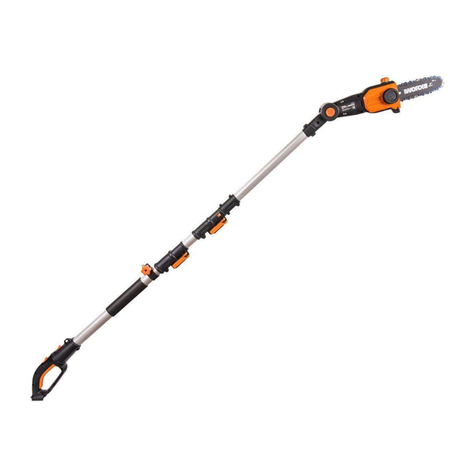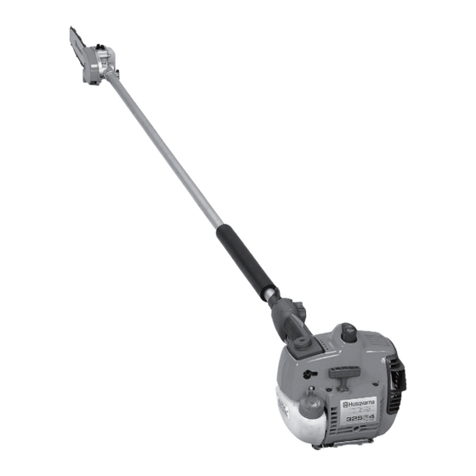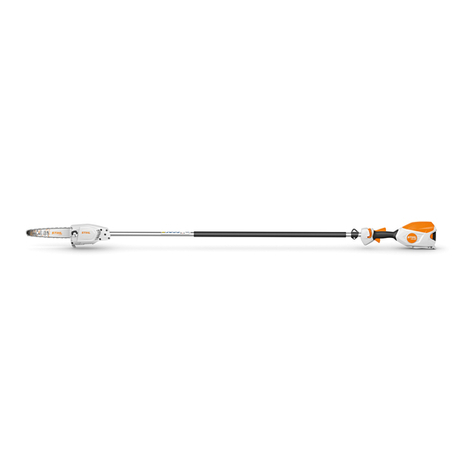
EN
- 10 -
that have the switch on invites accidents.
• Disconnect the battery pack from the
appliance before making any adjustments,
changing accessories, or storing appliance.
Such preventive safety measures reduce the
risk of starting the appliance accidentally.
• Under abusive conditions, liquid may be
ejected from the battery; avoid contact. If
contact accidentally occurs, flush with water.
If liquid contacts eyes, additionally seek
medical help. Liquid ejected from the battery
may cause irritation or burns.
• Have servicing performed by a qualified
repair person using only identical
replacement parts.This will ensure that the
safety of the product is maintained.
• Protect your rechargeable battery against
moisture, rain and high humidity. Moisture,
rain and high humidity can cause dangerous
cell damage. Never charge or work with
batteries which have been exposed to
moisture, rain or high humidity – replace them
immediately.
• If your equipment is fitted with a detachable
battery, remove the battery for safety reasons
after you have finished your work.
IMPORTANT SAFETY INSTRUCTIONS FOR
CHARGER
WARNING: This product may contain lead,
phthalate or other chemicals known to the State
of California to cause cancer, birth defects and
other reproductive harm. Please wash your hands
after use.
Protection from environmental influences
1. Wear suitable work clothes.Wear safety
goggles.
2. Protect your cordless tool and the battery
charger from moisture and rain. Moisture
and rain can cause dangerous cell damage.
3. Do not use the cordless tool or the battery
charger near vapors and inflammable liquids.
4. Use the battery charger and cordless tools
only in dry conditions and an ambient
temperature of 10-40°C.
5. Do not keep the battery charger in places
where the temperature is liable to reach over
40°C. In particular, do not leave the battery
charger in a car that is parked in the sunshine.
6. Protect batteries from overheating.
Overloads, over-charging and exposure to
direct sunlight will result in overheating and
cell damage. Never charge or work with
batteries which have been overheated –
replace them immediately if possible.
7. Storage of batteries, battery chargers
and cordless tools. Store the charger and
your cordless tool only in dry places with an
ambient temperature of 10-40°C. Store your
lithium-ion battery pack in a cool, dry place at
a temperature of 10-20°C. Protect them from
humidity and direct sunlight. Only place fully
charged batteries in storage (charged at least
40%).
8. Prevent the lithium-ion battery pack from
freezing. Battery packs which were stored
below 0°C for more than 60 minutes must be
disposed of.
9. When handling batteries beware of
electrostatic charge: Electrostatic discharges
cause damage of the electronic protection
system and the battery cells. Avoid
electrostatic charging and never touch the
battery poles.
Chain saw safety warnings
1) Keep all parts of the body away from the saw
chain. Do not remove cut material or hold
material to be cut when saw chain is moving.
Make sure the switch is offwhen clearing
jammed material. Saw chain continues to
move after the switch is turned off. A moment
of inattention while operating the pole chain
saw may result in serious personal injury.
2) Carry the pole chain saw by the handle with
the saw chain stopped.When transporting
or storing the pole chain saw, always fit the
saw chain guard. Proper handling of the pole
chain saw will reduce possible personal injury
from the saw chain.
3) Hold the pole chain saw by insulated gripping
surfaces only, because the saw chain may
contact hidden wiring. A saw chain contacting
a ″live″wire may make exposed metal parts
of the pole chain saw ″live″and could give
the operator an electric shock.
4) Do not use the pole chain saw in bad weather
conditions, especially when there is a risk
of lightning.This decreases the risk of being
struck by lightning.
5) To reduce the risk of electrocution, never use
near any electrical power lines. Contact with
or use near power lines may cause serious
injury or electric shock resulting in death.
6) Always use two hands when operating the
pole chain saw. Hold the pole chain saw with
both hands to avoid loss of control.
7) Always use head protection when operating
the pole chain saw overhead. Falling debris
Anl_GE_HC_18_Li_T_Part1_USA_SPK7.indb 10Anl_GE_HC_18_Li_T_Part1_USA_SPK7.indb 10 23.11.2022 14:22:5323.11.2022 14:22:53
